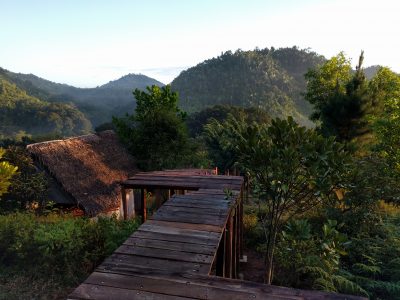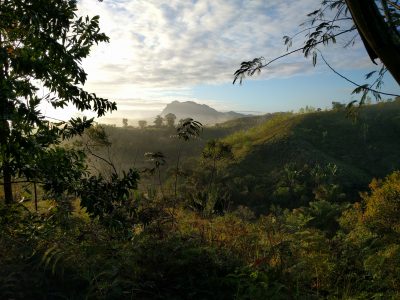I visited Madagascar Biodiversity Partnership‘s (MBP) field station in Kianjavato last year to learn about their reforestation and conservation efforts in this region. Kianjavato is located about 1 ½ hours east of Ranomafana, and is home to at least 14,000 people and a dozen villages. The forest fragments surrounding Kianjavato are home to nine lemur species including the aye-aye, black and white ruffed lemur, and the greater bamboo lemur.
Reforestation to Connect the Forests of Kianjavato and Vatovavy
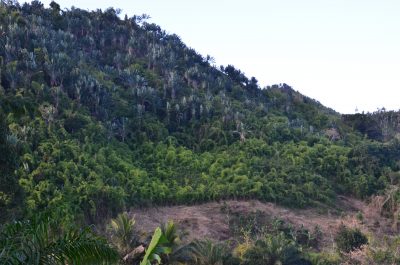
Forest corridors help lemurs and other animals travel between isolated populations and maintain healthy genetic diversity. When I visited in late August, the team had already planted ~850,000 trees. By the end of 2016, MBP had planted over 1 million trees in this area! In 2017, they aim to plant 500,000 trees in just one year!
How does the reforestation process work?
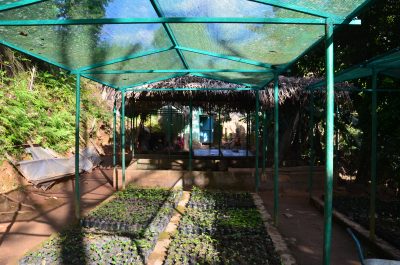
To prepare the young trees, the team mixes soil, sand, and compost to promote healthy growth. The compost is created by a careful mixture of plant leaves and other compostable materials like banana peels, and tended for four months before it’s ready for use.
When the seeds grow, they are moved to individual pots. Two tree species, acacia and albizia, grow the fastest and give shade. So, after about one month, these plants grow to ~18 inches tall, and are strong enough to be planted in their permanent home in the new forest corridor. The native species take about three months to grow strong, so they are planted later and fill in the gaps when they are ready.
How does Madagascar Biodiversity Partnership involve the community in reforestation?
The MBP works very closely with the Kianjavato community, getting local buy-in, providing jobs and incentive items like backpacks and materials to kick start local business. The MBP also works with Conservation Fusion on a number of education programs for school children.
Getting Community Buy-in
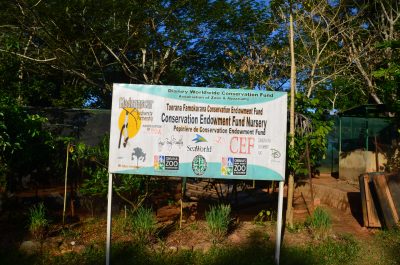
Providing Jobs
At the time of my visit, about 50 local people in Kianjavato had permanent jobs with MBP, and about 70 others helped with planting on a part time basis. Each new nursery brings more jobs to the area.
Prior to MBP’s presence in the area, locals had less stability, surviving by mining gemstones or harvesting and selling bananas. Now, they are respected, full time employees who find immense pride in their work and each tree they plant.
Conservation Credits Available to Everyone
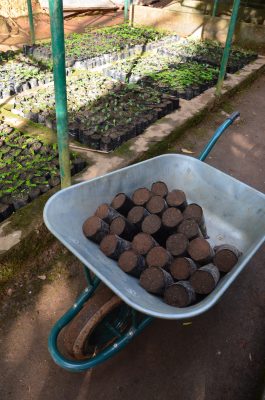
Just a few days before my visit, over 100 people participated in a conservation credit planting day!
Prior to a CCR planting event, MBP holds a community meeting where people can apply to be a part of the event. Often the planting groups consist largely of women, who gain independence and the ability to purchase items for their home through the credit program.
Planning for Local Use of the Forest
MBP’s reforestation plan is unique in that they account for local use of the forest during their reforestation process. While the forest corridor is planted, they also plant an outer layer of forest filled with fruit and lumber, so locals have access to forest resources without needing to use the forest corridors that are important for lemurs and other species.
Local landholders enter into a contract and agree not to conduct tavy (slash and burn agriculture) with the understanding that they can use the products, fruit and lumber, from the reforested areas. When reforestation is completed, the agreement states the land still belongs to the local people.
Views from Kianjavato
- Views from Kianjavato, Madagascar. Photo: Lynne Venart.
My Travel Details
- Driver: Zina, booked through Asisten Travel
- Where I Stayed in Kianjavato: There are no hotels and no tourist infrastructure in Kianjavato at this time. I stayed in a tent as a guest of the Madagascar Biodiversity Partnership. Until a tourist infrastructure is developed, a very limited number of tourist visits can be arranged through Za Tours.

